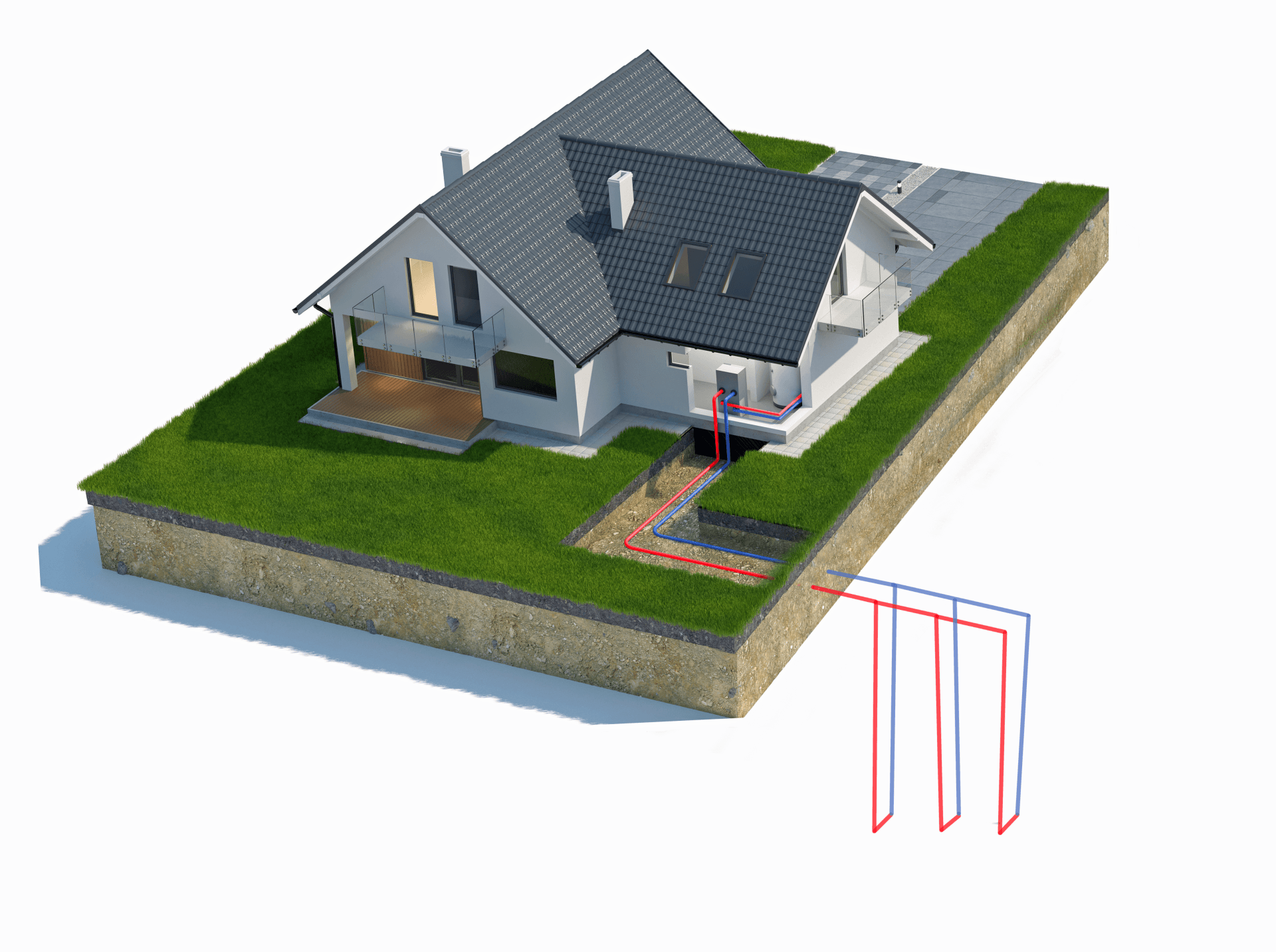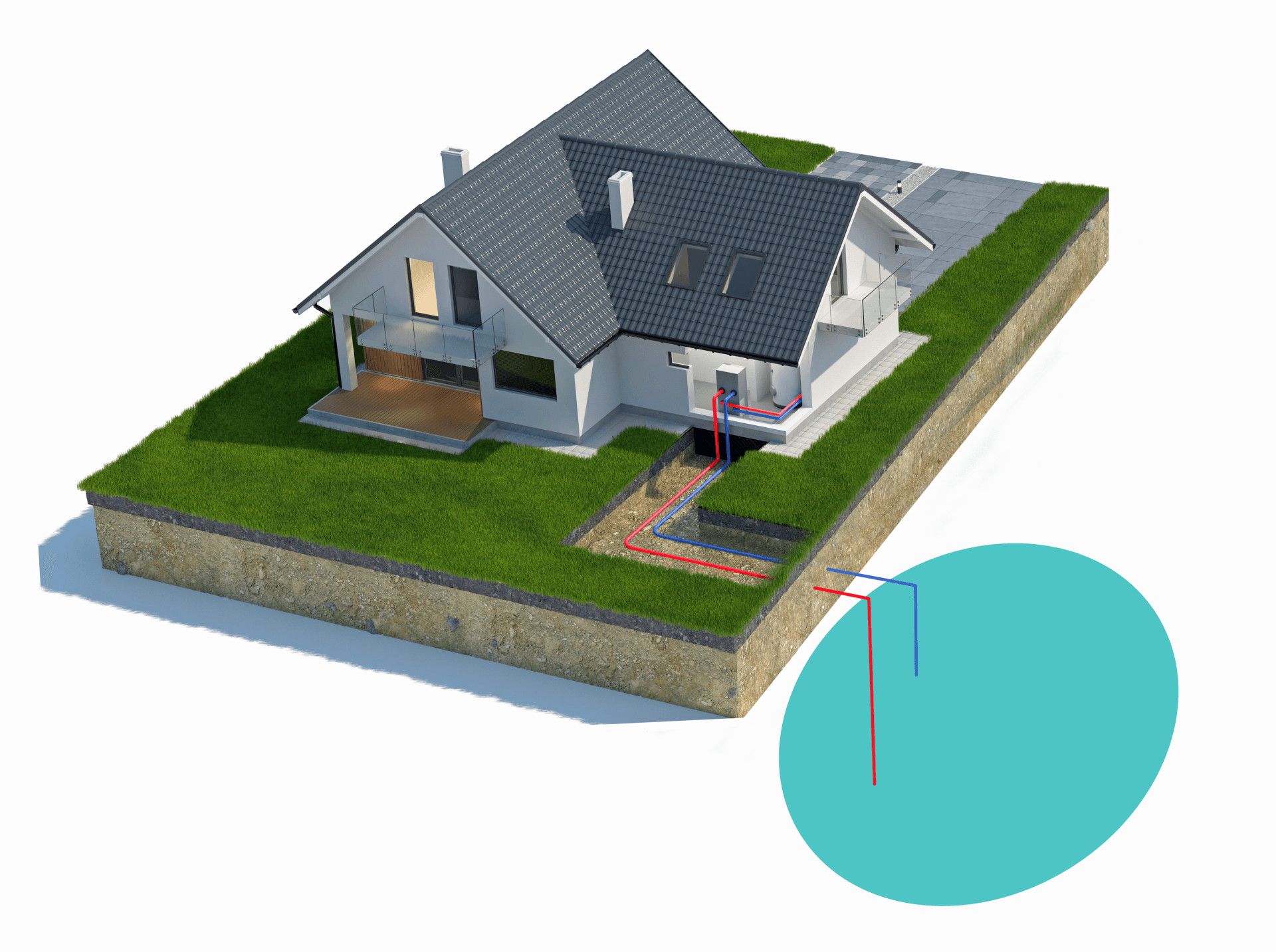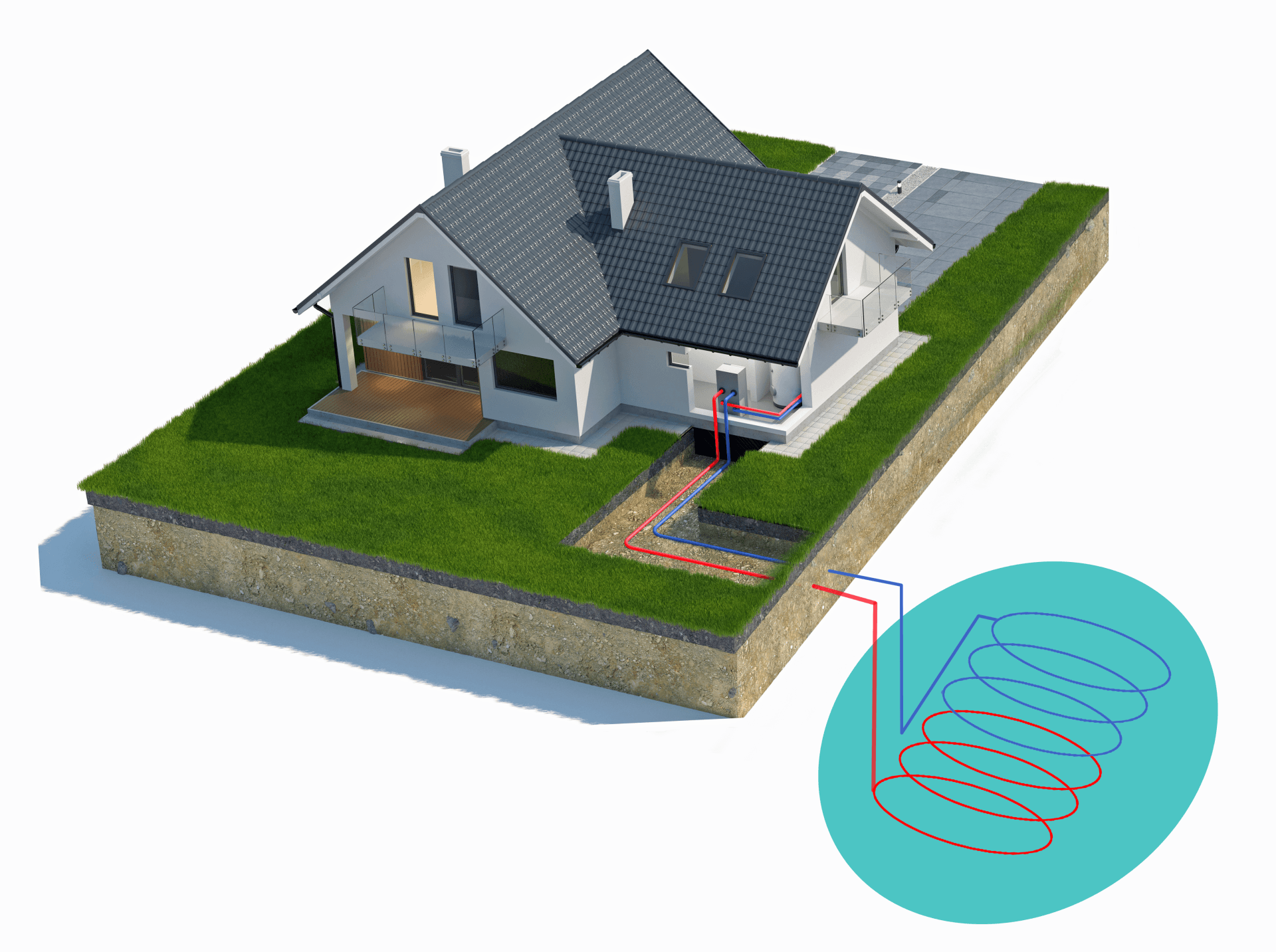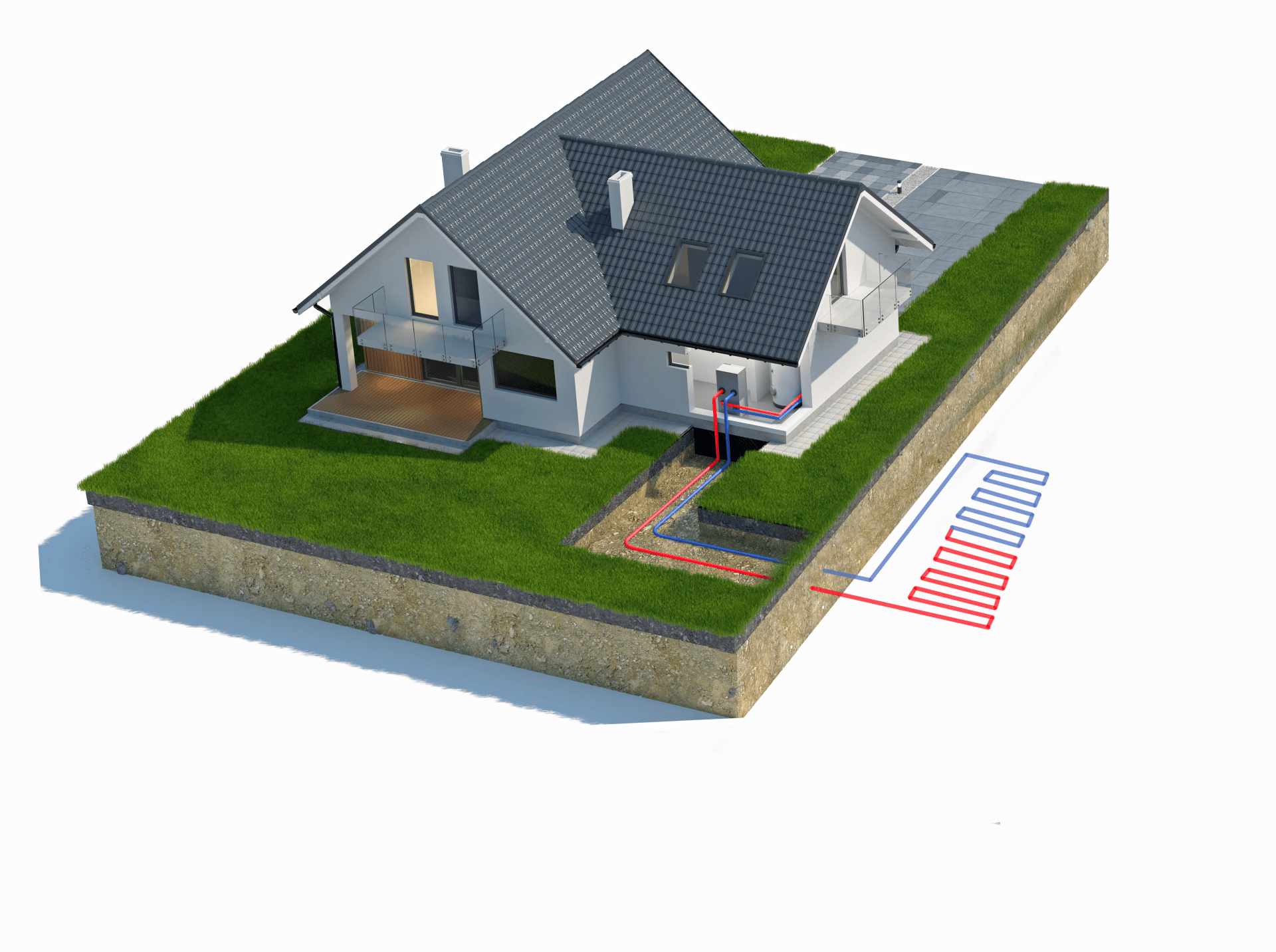How Geothermal Works
What is Geothermal Heating and Cooling?
To put it simply, a geothermal system is the most energy efficient home heating and cooling system.
Here’s how it works. Regardless of the outside temperature, the ground 5 feet below the surface maintains a stable temperature of about 55 degrees all year long. This temperature is warmer than the average winter air and cooler than the average summer air. Geothermal systems work by transferring heat from the ground into your home in the winter to warm it up and then in the summer, it moves heat from your home back into the ground to cool it down.
For a geothermal system to work, there are two key components–a Geothermal System and a network of ground loops (a buried pipe system). A Geothermal System sits inside your home, while the ground loops are buried below the surface of the ground.
The Difference Between Geothermal Cooling & Heating
How Geothermal Cooling Works
- Inside your home, during the summer months, a Geothermal System takes heat out of the air in your home and transfers that heat into the water that circulates through the ground loop.
- As that warm water moves through the ground loop it’s cooled by the earth’s 55 degree temperatures.
- That cooler water then circulates back through the Geothermal System to cool the home.
- This process continues, and as the pump continues to pull the heat out of the home, the water cools even more and is pumped back into the home until the desired temperature is reached.
How Geothermal Heating Works
- Inside your home, during the winter months, a Geothermal System pumps water through the ground loops, and it is there that the water absorbs the ground’s heat.
- The water then circulates through the Geothermal System, which extracts and concentrates the heat.
- This process continues, and as the pump continues to pull the heat out of the ground loops, the warmer air is pumped back into the home until the desired temperature is reached.
A Closer Look at the Types of Ground Loops and How They Work
Geothermal systems rely on a network of loops to transfer heat between your home and the earth. Understanding the different types of loops can help us select the most efficient and effective system for your property.

Geothermal Vertical Loop
Vertical loops are used when land space is limited or when the soil conditions are not ideal for horizontal installation. This system involves drilling vertical boreholes, usually 100 to 400 feet deep, into the ground.
Pipes are inserted into these boreholes and connected to form a closed loop. Vertical loops are ideal for smaller lots or properties with limited space, offering efficient performance in a compact area.
The borehole is commonly filled with a bentonite grout surrounding the pipe to provide a thermal connection to the surrounding soil or rock to improve the heat transfer. Thermally enhanced grouts are available to improve this heat transfer.

Geothermal Open Loop
Open-loop systems use groundwater from a well or other water source directly in the geothermal system. The water is pumped through the Geothermal System, where it exchanges heat, and then returned to the source or is discharged elsewhere.
Open-loop systems are efficient and can be cost-effective, but they require a reliable water source and proper treatment to avoid scaling or corrosion.
At Mid-Atlantic Geothermal, we can help you determine the best geothermal loop system for your property based on your space, soil conditions, and energy needs. Our experienced team will guide you through the selection process and ensure a seamless installation.

Geothermal Pond/Lake Loop
If your property has a pond or lake, you can take advantage of this water source with a pond or lake loop system. Pipes are placed in the water, typically in a coiled or grid pattern, and are connected to a heat exchanger.
Pond or lake loops are an excellent option for properties with access to a large body of water, providing efficient heat transfer and often reducing installation costs.

Geothermal Horizontal Loop
Horizontal loops are installed in trenches dug into the ground. This type of loop system is typically used for properties with ample land area. The installation involves laying out long, horizontal pipes in parallel trenches, usually about 4 to 6 feet deep.
What Our Clients Say
Here’s what our clients have to say about working with us. Their feedback speaks to the quality and reliability we aim to deliver. We value their insights as we continue to improve and grow.
Everyone involved was professional and the process went smoothly. The system is much quieter and keeps the temperature throughout the house more even than the old furnace. I expected to see long term savings with this energy efficient system, but was elated to see huge savings in just the first year!
This is while keeping the house now at a constant 70 degrees … so the comfort level greatly improved. The air conditioning also works extremely well, running much less than the old high efficiency system. I would recommend geothermal and Mid-Atlantic as the installer.
*Geothermal data provided by US Dept of Energy, Energy Star, IGSHPA, GEO, AHRI, This Old House, and EnergySage. Provided figures on this website are estimated based on national averages. Every project is unique. *Additional Resources: Guide to Geothermal Heat Pumps, Geothermal Heat Pumps, Certified Geothermal Heat Pumps, Homeowners Guide to Geothermal
Ready to Get Started? We’re Here to Help!
We want to know your exact needs so that we can provide the perfect solution. Let us know what you want and we’ll do our best to help.
*Geothermal data provided by US Dept of Energy, Energy Star, IGSHPA, GEO, AHRI, This Old House, and EnergySage. Provided figures on this website are estimated based on national averages. Every project is unique. *Additional Resources: Guide to Geothermal Heat Pumps, Geothermal Heat Pumps, Certified Geothermal Heat Pumps, Homeowners Guide to Geothermal
